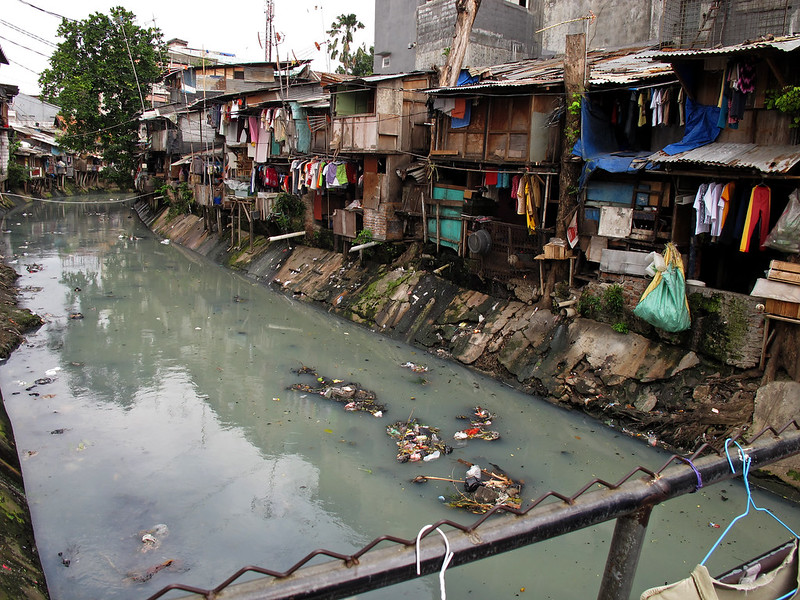International Water Infrastructure Privatization, Part II
Additional protests around water privatization began happening in Asia, Africa, and other parts of South America. The Kyoto Water Forum in 2003 saw various strands of the water justice movement coming together to reject the commodification of water. Despite these advances, The Wall Street Transcript organized a conference in 2005 titled, “Profiting in the Water Industry: Tapping a reservoir of wealth.” The conference reported that in the U.S. alone the water industry was expected to grow to $150 billion before inflation (the World Bank estimated the global market of water services to be worth $800 billion). The announcement promised participants opportunities to discover investments and profitable niches in the $150 billion water industry.

Financing infrastructure for the water sector comes mainly from the public sector of developing countries and is “topped-up” with contributions from foreign aid, international financial institutions, commercial loans and private equity. Despite the link between water security, development and poverty alleviation, overall investment in water resources management has been seriously neglected. According to the Vision and other estimates, developing and transitional countries will require $180 billion annually in order to produce global water security over the next 25 years. This will require greater efficiency and better financial management. Several models for combining public, donor and/or private (both international and local) funding have been attempted, and the results have been mixed. The debate concerning public-private partnerships has not been resolved.
— From the Final Report of the 3rd World Water Forum, World Water Council, 2003. p 59.
In 2015, an Indonesian Supreme Court ruling ordered Jakarta to end one of the world’s largest water privatization schemes.
“A coalition of activists, trade unions and Jakarta residents filed a class-action lawsuit in 2012 claiming that the companies failed to guarantee people’s right to clean water. The companies both engaged in price differentiation that disproportionately taxed low-income residents and afforded them huge profits…
The defendants proved that the private companies’ “cooperation agreement has had a real and extraordinary impact on society,” the Supreme Court said in its decision. “These losses include: 1) Piped water services that can only be accessed by about half the population in Indonesia … and 2) Citizens must pay for clean water at very high rates but with poor water quality and quantity.”
It is consistent with an earlier 2004 Supreme Court ruling on water privatization, which posited that “water resources have to be controlled and allocated for the public benefit, thus private companies cannot monopolize rights over water sources.”
Water access threatens to become a major public health issue if it is not addressed promptly. North Jakarta residents described how they received “only sporadic water service, mostly limited to evening hours.” Others said they “were forced to buy expensive drinking water from street vendors and bathe in polluted public wells.”
Wealthier residents have long dug their own private wells because of the poor quality of water services in the city. The prevalence of such wells is one reason Jakarta is one of the fastest-sinking cities in the world.”
— From “Massive Water Privatization Program to End in Jakarta After 18 Years” by Krithika Varagur in VOA News, 2017.


